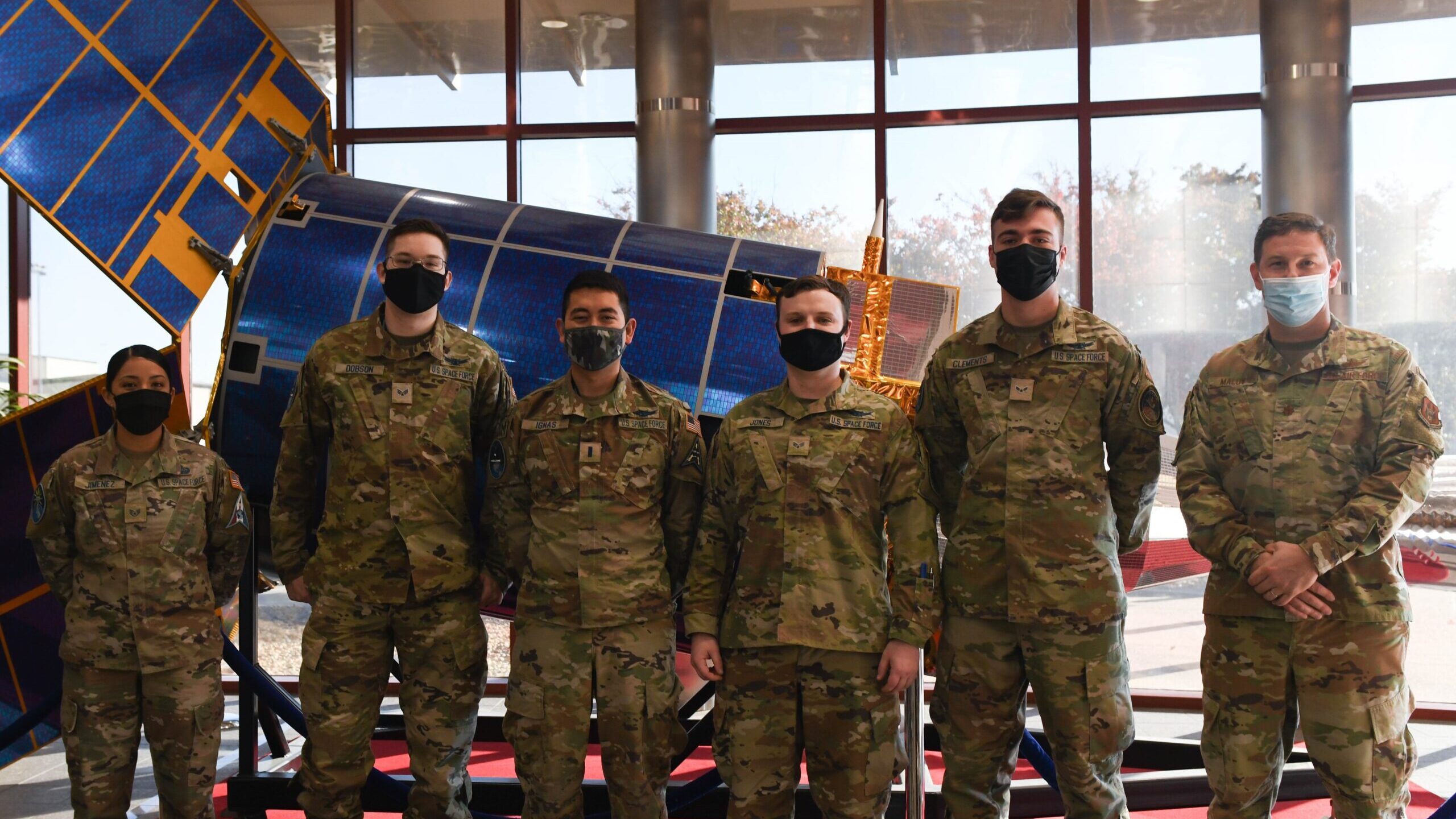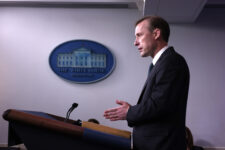
Participants in the Oct. 27, 2021 in the Coalition Virtual Flag exercise at Buckley SFB, Colo. (U.S. Space Force photo by Senior Airman Haley N. Blevins)
WASHINGTON: Unlike the other military services, the Space Force faces a key conundrum in both testing new kit and training Guardians to operate current space systems: the inability to stake out an area of outer space for a live testing range.
“This is maybe one of the biggest technical challenges that we’re working through right now,” Maj. Gen. Shawn Bratton, the head of Space Training and Readiness Command (STARCOM), told reporters April 6 at the Space Foundation’s annual Space Symposium.
The problem, as Bratton explained, is that under international law no nation can stake a claim over a region of space. The 1967 Outer Space Treaty prohibits claims of national sovereignty in outer space or on a celestial body such as the Moon. Thus, it simply isn’t possible to set up a testing and training range where, for example, live wargames could take place.
“In other domains — in air, land and sea — there, we carve out a piece of real estate,” Bratton said. For the Air Force, he noted, this includes Edwards AFB in California and Nellis AFB in Nevada “where we can fly new systems and test them out and understand the capabilities. There’s there’s no sovereignty and space and we’re not we’re not looking to impose that sort of model at all in the space domain.”
RELATED: As classified B-21 bomber nears flight, secret facility sees more ‘curious’ probing
Thus, the future National Space Test and Training Complex (NSTTC), known in Guardian slang as “the range,” will not look a lot like traditional test and training ranges. Instead, Bratton explained, there will be a heavy reliance on the use of digital models and simulation, all on the ground.
Already, STARCOM is partnering with the Space Warfighting and Analysis Center (SWAC) as it builds digital models to guide future force design across the Space Force.
“We’ll be able to do testing in the digital space for new systems, as well as training activities,” Bratton said. “And we’ll use those same models that that begin with SWAC and kind of worked their way through the Space Systems Command and eventually STARCOM will also begin using those. That requires a shared infrastructure that enables us to pass models, and there’s a technical challenge there.”
Training for Guardians currently almost all happens in the digital realm, he said. For example, the current Space Flag exercise series, which dates back to 2017, and the now defunct Air Force Space Command, is totally virtual — although Bratton noted that STARCOM has done some live training in the electronic warfare arena.
“I do think there’s some activities that we would benefit from live training. And we’re thinking about how to do that,” he said. “There’s a great model that happens today at Air Force Academy and the FalconSAT program.”
FalconSAT is a space-based program that allows cadets at the academy to build and fly a very small satellite. FalconSAT-8, equipped with five small test payloads, was carried to orbit in May 2020 aboard the X-37B space plane.
“We’re trying to assess if that’s a good model for us to expand in the Space Force,” Bratton said, “where operators, whether space cyber or intelligence, can get some hands-on experience before they show up at their first operations unit.”
Asked by Breaking Defense when decisions might be made on how to move forward with the NSSTC, Bratton said requirements are still being developed.
“I think the there’s a lot that that remains to think through on the architecture of that range, or the NSTTC if you will, and they’re really driven by the requirements of the test community. So, what systems do we expect to field? What’s the test plan associated with that? Then how do we, with STARCOM’s responsibility, build and make sure we have the infrastructure to test those systems?” he said.
“In some ways, it’s been driven by the acquisition of new systems,” Bratton added. “But we have a group working right now with both SWAC and SSC, Space Systems Command, participation to really define that sort of baseline architecture.”
In addition, Bratton noted, there is the issue of ensuring the safety of other spacecraft nearby, as well as ensuring that any live training activities in space are not mistaken by others as aggressive actions.
“It needs to be done safe and professional. We need to think about that,” he said. “It goes to the norms of behavior and how do we communicate our intent of what we’re doing so that we’re not surprising any anybody, and we’re not presenting any uncertainty into the domain.”
Russia vetos US-Japan resolution against nukes in space, ‘unprecedented escalation’ in UN fight
“Although Russia would not be expected to vote for a resolution aimed at its own conduct, its response that it is ‘against’ putting nuclear weapons in space is just vague enough to not quite be reassuring,” said Jessica West of Canada’s Project Ploughshares.


























